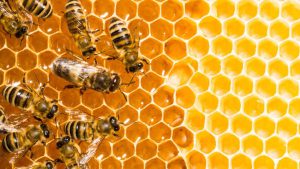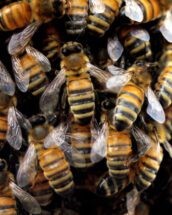Honey bee expert to discuss what the insects can tell us about social behavior in Discover Science lecture
 At first glance, honey bees and humans don’t look like they would have that much in common.
At first glance, honey bees and humans don’t look like they would have that much in common.
 Gene Robinson
Gene Robinson
But the honey bee lives in societies that rival our own in complexity. They have an organized yet flexible division of labor, their own language and, like humans, they undergo developmental changes over the course of their lifetimes.
That makes them a perfect model organism to study how genes and the environment govern social behavior.
Entomologist and renowned honey bee expert Gene E. Robinson, the director of the Carl R. Woese Institute for Genomic Biology at the University of Illinois at Urbana-Champaign, will speak at Clemson University October 2 as part of the College of Science’s Discover Science lecture series.
Robinson will present “Pillars of the social brain: Lessons from the honey bee” at 2 p.m. in the Watt Family Innovation Center auditorium. The lecture is open to the public.
Powerful model
“Gene Robinson has transformed the honey bee from an agricultural commodity into a powerful neurogenetic model for studies on social behavior. The broad impact of his work cannot be overstated,” said Robert Anholt, provost distinguished professor in the Clemson Department of Genetics and Biochemistry and the College of Science’s director of faculty excellence.
Robinson’s journey into the world of honey bees started when he was 18. He took a break from college to travel to Israel and work on a kibbutz, a communal farm. He had been picking grapefruits when the beekeeper needed some help. On a lark, despite having no prior knowledge of bees or beekeeping, Robinson volunteered. Little did he know that seemingly casual decision would lead him to become a leading expert in the field of honey bees and a pioneer in the application of genomics to the study of social behavior.
“From that first day, I was smitten with bees, and knew I wanted to work with them in some capacity as a career,” Robinson said.
The three “pillars” he references in his talk relate to the relationship between brain gene expression and behavior. Robinson said the relationship is “surprisingly close, functionally casual and evolutionarily conserved.”
Genetic toolkits
 “Bees are not little humans, and humans are not big bees. Social behavior in these two lineages evolved separately and independently. That said, research from our lab and others indicates that these separate and independent instantiations of social evolution have relied on some of the same molecular building blocks, suggesting genetic toolkits for building and operating social brains,” he said.
“Bees are not little humans, and humans are not big bees. Social behavior in these two lineages evolved separately and independently. That said, research from our lab and others indicates that these separate and independent instantiations of social evolution have relied on some of the same molecular building blocks, suggesting genetic toolkits for building and operating social brains,” he said.
Robinson led the effort to sequence the honey bee genome. He discovered the first known gene involved in regulating the bee colony’s division of labor, identified the gene that helps honey bees find flowers, discovered that some bees show a greater desire to seek adventure than others and found parallels between unresponsive honey bees and human autism.
Robinson said the discovery that surprised him the most was the extreme levels of individual specialization that some bees exhibit.
“Yellow 57 collected water from the same exact location for her entire foraging career, 17 days,” he said.
Robinson is a member of the National Academy of Sciences and is a recipient of the Wolf Prize in Agriculture. He has authored or co-authored over 325 publications and has trained 35 postdoctoral associates and 25 doctoral students.
We are here to share current happenings in the bee industry. Bee Culture gathers and shares articles published by outside sources. For more information about this specific article, please visit the original publish source: Honey bee expert to discuss what the insects can tell us about social behavior in Discover Science lecture | Clemson News








